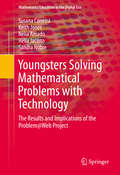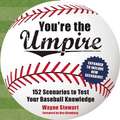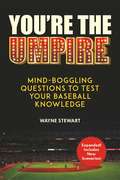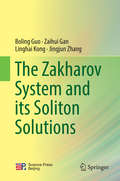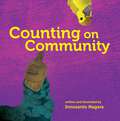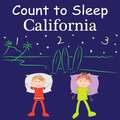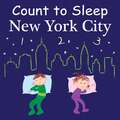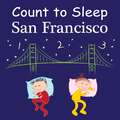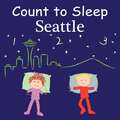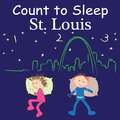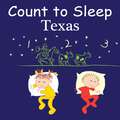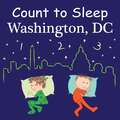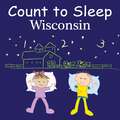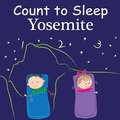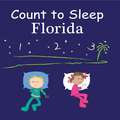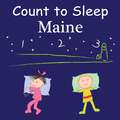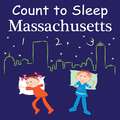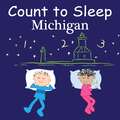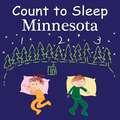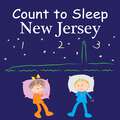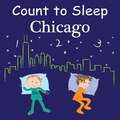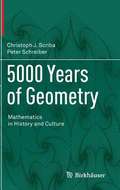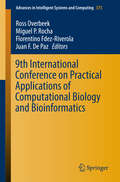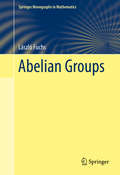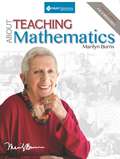- Table View
- List View
Youngsters Solving Mathematical Problems with Technology
by Susana Carreira Keith Jones Nélia Amado Hélia Jacinto Sandra NobreThis book contributes to both mathematical problem solving and the communication of mathematics by students, and the role of personal and home technologies in learning beyond school. It does this by reporting on major results and implications of the Problem@Web project that investigated youngsters' mathematical problem solving and, in particular, their use of digital technologies in tackling, and communicating the results of their problem solving, in environments beyond school. The book has two focuses: Mathematical problem solving skills and strategies, forms of representing and expressing mathematical thinking, technological-based solutions; and students´ and teachers´ perspectives on mathematics learning, especially school compared to beyond-school mathematics.
You're the Umpire: 152 Scenarios to Test Your Baseball Knowledge
by Wayne Stewart Ron BlombergDo you think you have what it takes to be a Major League umpire? Well, now you can test your knowledge of the game with Wayne Stewart’s You’re the Umpire.Divided into three sections, this unusual handbook, now in its second edition, offers "Routine Calls," which deal with scenarios and rules that typically come up in games and deal with clear cut rules-fair and foul, strike zone questions, and the like. The next section, "Basic Situations," deals with umpiring matters and rules that are just a bit more unusual or, for the casual fan, obscure. Interference and obstruction calls, for example, don’t come up too often, but they remain standard stuff involving rules that umps and many fans know quite well. In the final section, "Obscure Rules and Situations," you will be presented with what many baseball people call "knotty” problems. Here, you will be asked questions involving the complex infield fly rule and other arcane matters. This section, then, is the ultimate test of your umpiring skills and knowledge.Most of the situations in You’re the Umpire come from real games, but some scenarios are made up to illustrate specific points or rules. Test yourself against your friends or against the famously iconic baseball rulebook. It’s a challenge and it’s fun.Skyhorse Publishing, as well as our Sports Publishing imprint, are proud to publish a broad range of books for readers interested in sports-books about baseball, pro football, college football, pro and college basketball, hockey, or soccer, we have a book about your sport or your team.Whether you are a New York Yankees fan or hail from Red Sox nation; whether you are a die-hard Green Bay Packers or Dallas Cowboys fan; whether you root for the Kentucky Wildcats, Louisville Cardinals, UCLA Bruins, or Kansas Jayhawks; whether you route for the Boston Bruins, Toronto Maple Leafs, Montreal Canadiens, or Los Angeles Kings; we have a book for you. While not every title we publish becomes a New York Times bestseller or a national bestseller, we are committed to publishing books on subjects that are sometimes overlooked by other publishers and to authors whose work might not otherwise find a home.
You're the Umpire: Mind-Boggling Questions to Test Your Baseball Knowledge
by Wayne StewartDo you think you have what it takes to be a Major League umpire? Well, now you can test your knowledge of the game with Wayne Stewart’s You’re the Umpire. Divided into three sections, this unusual handbook, now in its third edition, offers Routine Calls, which deal with scenarios and rules that typically come up in games and deal with clear-cut rules—fair and foul, strike zone questions, and the like. The next section, Basic Situations, deals with umpiring matters and rules that are just a bit more unusual or, for the casual fan, obscure. Interference and obstruction calls, for example, don’t come up too often, but they remain standard stuff involving rules that umps and many fans know quite well. In the final section, Obscure Rules and Situations, you will be presented with what many baseball people call “knotty” problems. Here, you will be asked questions involving the complex infield fly rule and other arcane matters. This section, then, is the ultimate test of your umpiring skills and knowledge. Most of the situations in You’re the Umpire come from real games, such as the time a fastball from Randy Johnson killed a bird in flight and what the umps did regarding that pitch, but some scenarios are made up to illustrate specific points or rules. Test yourself against your friends or against the iconic baseball rulebook. It’s a challenge and it’s fun.
The Zakharov System and its Soliton Solutions
by Boling Guo Zaihui Gan Linghai Kong Jingjun ZhangThis book focuses on the theory of the Zakharov system in the context of plasma physics. It has been over 40 years since the system was first derived by V. E. Zakharov - and in the course of those decades, many innovative achievements with major impacts on other research fields have been made. The book represents a first attempt to highlight the mathematical theories that are most important to researchers, including the existence and unique problems, blow-up, low regularity, large time behavior and the singular limit. Rather than attempting to examine every aspect of the Zakharov system in detail, it provides an effective road map to help readers access the frontier of studies on this system.
Counting on Community
by Innosanto NagaraCounting on Community is Innosanto Nagara's follow-up to his hit ABC book, A is for Activist. Counting up from one stuffed piñata to ten hefty hens--and always counting on each other--children are encouraged to recognize the value of their community, the joys inherent in healthy eco-friendly activities, and the agency they posses to make change. A broad and inspiring vision of diversity is told through stories in words and pictures. And of course, there is a duck to find on every page!
Count To Sleep California (Count To Sleep)
by Adam Gamble Mark JasperMaking basic numbers fun to learn, this board book teaches kids to count to 10 using famous California icons and landmarks. Featuring whimsical illustrations, this concept books is a terrific way to introduce young children to cherished destinations in California while easing them to sleep at naptime or bedtime. The Pacific Ocean, Golden Gate Bridge, Hollywood, sea lions, Napa Valley, the Sierra Nevada Mountains, and Yosemite National Park are all included in this playful counting book.
Count To Sleep New York City (Count To Sleep)
by Adam Gamble Mark JasperMaking basic numbers fun to learn, this board book teaches kids to count to 10 using famous New York City icons and landmarks depicted in whimsical illustrations. This concept book is a terrific way to introduce young children to cherished destinations while easing them to sleep at naptime or bedtime. Introducing kids to the wonders of New York City, this book features the Statue of Liberty, hot dog stands, taxi cabs, Central Park, and Broadway theaters, among other Manhattan icons.
Count To Sleep San Francisco (Count To Sleep)
by Adam Gamble Mark JasperMaking basic numbers fun to learn, this board book teaches kids to count to 10 using famous San Francisco icons and landmarks depicted in whimsical illustrations. This concept book is a terrific way to introduce young children to cherished destinations in San Francisco while easing them to sleep at naptime or bedtime. All the best that San Francisco has to offer—the city’s iconic cable cars, the Golden Gate Bridge, San Francisco Bay, Coit Tower, Golden Gate Park, and the nearby Redwood trees—is included in this playful counting book.
Count To Sleep Seattle (Count To Sleep)
by Adam Gamble Mark JasperCount to sleep Seattle features the Space Needle, Pikes Place Market, ferryboats, Mount Rainer, Museum of Flight, Woodland Park Zoo, Settle Aquarium, orcas, and houseboats. Count your way through the the great city of Seattle with this adorable counting book Young readers will count all their favorite city icons and landmarks, while being lulled into a peaceful nights sleep.
Count To Sleep St. Louis (Count To Sleep)
by Adam Gamble Mark JasperMaking basic numbers fun to learn, this board book teaches kids to count to 10 using famous icons and landmarks from St. Louis depicted in whimsical illustrations. This concept book is a terrific way to introduce young children to cherished destinations in St. Louis while easing them to sleep at naptime or bedtime. Young Missourians and visitors delight in counting with the Gateway Arch, St. Louis Art Museum, Missouri History Museum, St. Louis Zoo, symphony orchestra, local sports teams, and the Mississippi River.
Count To Sleep Texas (Count To Sleep)
by Adam Gamble Mark JasperGet ready to count the great state of Texas! Featuring whimsical illustrations that make basic numbers fun to learn, this concept book is a terrific way to introduce young children to cherished destinations in Texas while easing them to sleep at naptime or bedtime. Young Texans and visitors delight in counting bull riders, Texas Rangers bats, San Antonio riverboats, barbeque ribs, bluebonnets, Austin Bat Bridge bats, Lone Star flags, and more.
Count to Sleep Washington, DC (Count To Sleep)
by Adam Gamble Mark JasperMaking basic numbers fun to learn, this board book teaches kids to count to 10 using famous DC icons and landmarks depicted in whimsical illustrations. This concept book is a terrific way to introduce young children to cherished destinations in Washington, DC, while easing them to sleep at naptime or bedtime. With a tour of the nation’s capital—the National Mall, the Potomac River, the Smithsonian museums, the White House, the Supreme Court, the Capitol Building, and many of Washington, DC’s monuments—this counting book celebrates the district’s numerous exciting and unique destinations.
Count To Sleep Wisconsin (Count To Sleep)
by Adam Gamble Mark JasperMaking basic numbers fun to learn, this board book series teaches kids to count to 10 using famous icons and landmarks from cities and states across North America. Featuring whimsical illustrations, these concept books are a terrific way to introduce young children to cherished elements of Wisconsin while easing them to sleep at naptime or bedtime. From Wisconsin cheese to Cheeseheads, young readers will delight in the charms of the Badger State. Highlights include cranberries, cherries, dairy cows, Milwaukee Brewers bats, zoo animals, the Wisconsin Fair, and more.
Count To Sleep Yosemite (Count To Sleep)
by Adam Gamble Mark JasperMaking basic numbers fun to learn, this board book series teaches kids to count to 10 using famous Yosemite icons and landmarks. Featuring whimsical illustrations, this concept book is a terrific way to introduce young children to cherished elements of Yosemite while easing them to sleep at naptime or bedtime. All the best that Yosemite National Park has to offer is included in this playful, educational counting book.
Count To Sleep Florida (Count To Sleep)
by Adam Gamble Mark JasperMaking basic numbers fun to learn, this board book teaches kids to count to 10 using famous Florida icons and landmarks depicted in whimsical illustrations. This concept book is a terrific way to introduce young children to a cherished destination while easing them to sleep at naptime or bedtime. Exploring Florida, this counting book celebrates many of the Sunshine State’s most famous features, including the Atlantic Ocean and Gulf Coast, the Keys, the Everglades, Miami, Orlando, orange groves, beaches, boating, tropical fish, and much more.
Count To Sleep Maine (Count To Sleep)
by Adam Gamble Mark Jasper Joe VenoMaking basic numbers fun to learn, this board book teaches kids to count to 10 using famous Maine icons and landmarks depicted in whimsical illustrations. This concept book is a terrific way to introduce young children to cherished destinations while easing them to sleep at naptime or bedtime. Rocky coastlines, quaint seaside villages, lovely beaches, whitewater rafting, and Mount Katahdin—all things that make Maine special—are explored in this playful counting book.
Count To Sleep Massachusetts (Count To Sleep)
by Adam Gamble Mark JasperMaking basic numbers fun to learn, this board book teaches kids to count to 10 using famous Boston icons and landmarks depicted in whimsical illustrations. This concept book is a terrific way to introduce young children to cherished destinations while easing them to sleep at naptime or bedtime. Covering unique aspects of Boston, including Charles River boaters, Boston Harbor, the USS Constitution, the skyline, and marathon runners, this colorful board book explores the places and things that make Beantown special.
Count To Sleep Michigan (Count To Sleep)
by Adam Gamble Mark JasperYoung Michigan readers and visitors delight in counting some of this state’s most-loved attractions, including lighthouses, zoo animals, bridges, Mackinac Island ferryboats, cherry pickers, antique cars at The Henry Ford, and more.
Count To Sleep Minnesota (Count To Sleep)
by Adam Gamble Mark JasperMaking basic numbers fun to learn, this board book teaches kids to count to 10 using famous Twin Cities' icons and landmarks depicted in whimsical illustrations. This concept book is a terrific way to introduce young children to cherished destinations while easing them to sleep at naptime or bedtime. Exploring the Twin Cities from 1 to 10, this counting book celebrates icons of the area, including the skylines, bridges, winter scenes, Lake of the Isles, the State Capitol, and the beloved Spoonbridge and Cherry sculpture.
Count To Sleep New Jersey (Count To Sleep)
by Adam Gamble Mark JasperMaking basic numbers fun to learn, this board book teaches kids to count to 10 using famous New Jersey icons and landmarks depicted in whimsical illustrations. This concept book is a terrific way to introduce young children to cherished destinations while easing them to sleep at naptime or bedtime. Covering unique aspects of New Jersey, this book features the Jersey Shore, the boardwalk, pine barrens, and native wildlife, among other places and things that make the Garden State so special.
Count To Sleep Chicago (Count To Sleep)
by Adam Gamble Mark JasperMaking basic numbers fun to learn, this board book teaches kids to count to 10 using famous Chicago icons and landmarks depicted in whimsical illustrations. This concept book is a terrific way to introduce young children to a cherished destination while easing them to sleep at naptime or bedtime. Highlighting unique places and structures in Chicago, including Navy Pier, the Water Tower, the Field Museum of Natural History, and famous skyscrapers, this book is an exciting way to learn to count while celebrating many things that make the Windy City special.
5000 Years of Geometry
by Christoph J. Scriba Peter Schreiber Jana SchreiberThe present volume provides a fascinating overview of geometrical ideas and perceptions from the earliest cultures to the mathematical and artistic concepts of the 20th century. It is the English translation of the 3rd edition of the well-received German book “5000 Jahre Geometrie,” in which geometry is presented as a chain of developments in cultural history and their interaction with architecture, the visual arts, philosophy, science and engineering. <P><P> Geometry originated in the ancient cultures along the Indus and Nile Rivers and in Mesopotamia, experiencing its first “Golden Age” in Ancient Greece. Inspired by the Greek mathematics, a new germ of geometry blossomed in the Islamic civilizations. Through the Oriental influence on Spain, this knowledge later spread to Western Europe. Here, as part of the medieval Quadrivium, the understanding of geometry was deepened, leading to a revival during the Renaissance. Together with parallel achievements in India, China, Japan and the ancient American cultures, the European approaches formed the ideas and branches of geometry we know in the modern age: coordinate methods, analytical geometry, descriptive and projective geometry in the 17th an 18th centuries, axiom systems, geometry as a theory with multiple structures and geometry in computer sciences in the 19th and 20th centuries. <P><P> Each chapter of the book starts with a table of key historical and cultural dates and ends with a summary of essential contents of geometry in the respective era. Compelling examples invite the reader to further explore the problems of geometry in ancient and modern times. The book will appeal to mathematicians interested in Geometry and to all readers with an interest in cultural history.
9th International Conference on Practical Applications of Computational Biology and Bioinformatics (Advances in Intelligent Systems and Computing #375)
by Ross Overbeek Miguel P. Rocha Florentino Fdez-Riverola Juan F. PazThis proceedings presents recent practical applications of Computational Biology and Bioinformatics. It contains the proceedings of the 9th International Conference on Practical Applications of Computational Biology & Bioinformatics held at University of Salamanca, Spain, at June 3rd-5th, 2015. The International Conference on Practical Applications of Computational Biology & Bioinformatics (PACBB) is an annual international meeting dedicated to emerging and challenging applied research in Bioinformatics and Computational Biology. Biological and biomedical research are increasingly driven by experimental techniques that challenge our ability to analyse, process and extract meaningful knowledge from the underlying data. The impressive capabilities of next generation sequencing technologies, together with novel and ever evolving distinct types of omics data technologies, have put an increasingly complex set of challenges for the growing fields of Bioinformatics and Computational Biology. The analysis of the datasets produced and their integration call for new algorithms and approaches from fields such as Databases, Statistics, Data Mining, Machine Learning, Optimization, Computer Science and Artificial Intelligence. Clearly, Biology is more and more a science of information requiring tools from the computational sciences.
Abelian Groups (Springer Monographs in Mathematics)
by László FuchsWritten by one of the subject's foremost experts, this book focuses on the central developments and modern methods of the advanced theory of abelian groups, while remaining accessible, as an introduction and reference, to the non-specialist. It provides a coherent source for results scattered throughout the research literature with lots of new proofs. The presentation highlights major trends that have radically changed the modern character of the subject, in particular, the use of homological methods in the structure theory of various classes of abelian groups, and the use of advanced set-theoretical methods in the study of un decidability problems. The treatment of the latter trend includes Shelah's seminal work on the un decidability in ZFC of Whitehead's Problem; while the treatment of the former trend includes an extensive (but non-exhaustive) study of p-groups, torsion-free groups, mixed groups and important classes of groups arising from ring theory. To prepare the reader to tackle these topics, the book reviews the fundamentals of abelian group theory and provides some background material from category theory, set theory, topology and homological algebra. An abundance of exercises are included to test the reader's comprehension, and to explore noteworthy extensions and related sidelines of the main topics. A list of open problems and questions, in each chapter, invite the reader to take an active part in the subject's further development.
About Teaching Mathematics: A K-8 Resource
by Marilyn BurnsIn this fourth edition of her signature resource, Marilyn presents her current thinking and insights and includes ideas from her most recent teaching experiences. <P><P> Part 1, “Starting Points,” reflects the major overhaul of this book and addresses twenty-three issues important to thinking about teaching mathematics today. Part 2, “Problem-Solving Investigations,” opens with how to plan problem-solving lessons; followed by whole-class, small-group, and individual investigations organized into five areas of the curriculum: Measurement, Data, Geometry, Patterns and Algebraic Thinking, and Number and Operations. Part 3, “Teaching Arithmetic,” focuses on the cornerstone of elementary mathematics curriculum, offering ideas and assessments that build students’ understanding, confidence, and competence in arithmetic. In Part 4, “Questions Teachers Ask,” features Marilyn’s responses to pedagogical questions she’s received from teachers over the years. <P><P> More than forty reproducibles for About Teaching Mathematics are available to download in a printable format.
